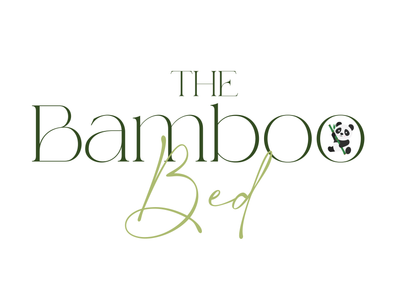So you have decided to take the plunge and treat yourself to some new bamboo sheets for your bed. Since bamboo sheets are incredibly soft, durable, environmentally friendly, moisture-wicking, and hypoallergenic, it is no wonder you want to be part of the bamboo bedding community.
But are there affordable bamboo sheets and how much should you be willing to pay?
As a leading bamboo bedding retailer, Bamboo Bed is here to discuss how affordable bamboo sheets are, typical bamboo sheets prices, factors that affect bamboo sheets’ cost, and the benefits of bamboo bedding so you can make an informed decision when making a purchase. Once you make the leap to bamboo sheets, you will never go back.
How Much Should You Pay for Bamboo Sheets?

As with most bedding choices, the price of bamboo bed sheets differs between manufacturers. However, it must be said that buyers should keep in mind that price isn’t the only indicator of quality. A higher price doesn’t necessarily mean that a bamboo sheet is of better quality than one that costs less.
Budget options can be as low as $50, while luxury options can cost $300 or more. There are many options for quality bamboo sheets in the price range of $100 to $150. When shopping for affordable bamboo sheets, it is important to consider the specific type of bamboo material, thread count, and its organic certification, among other properties, to ensure you get the most exceptional bamboo sheets at the price you want. Other factors to consider include shipping and return costs, which vary by location and selected retailer.
Factors Affecting the Cost of Bamboo Sheets

As you have probably noticed, the average price of bamboo sheets varies widely across different retailers. But why are some bamboo sheets more affordable than others? Well, several factors affect the cost of bamboo bedding products, including (but not limited to):
Manufacturing Process
There are 4 varieties of bamboo fabrics commonly found in the market today. They are 100 percent bamboo lyocell, 100 percent bamboo modal, 100 percent bamboo viscose, and bamboo blend. What sets these fabrics apart from one another are the processes involved in their manufacture. Each variety of fabric has different chemicals used and environmental impacts.
For instance, bamboo viscose is considered one of the most innovative and sustainable materials of recent times, because of the use of non-toxic solvents and the production of non-hazardous effluents. In comparison, bamboo modal employs chemical processes in its manufacture that are more detrimental to the environment. Therefore, bamboo viscose usually costs more than bamboo modal because of its more appealing manufacturing processes.
Type of Material
Depending on the variety of bamboo material you purchase as bedding, the total price will vary. For instance, bamboo lyocell is cheaper to manufacture and produce than bamboo viscose and is therefore often cheaper to purchase.
Also, bamboo blend sheets are generally less expensive than 100 percent bamboo sheets because the quality isn’t as high. Bamboo blend sheets aren’t as effective as 100 percent bamboo sheets in some areas, like moisture wicking and durability, preferring to focus on qualities like softness.
Organic Certifications
The organic characteristics of bamboo sheets and their certification will alter the cost of bamboo sheets. 100% organic bamboo sheets are likely to cost more than their counterparts because of the extra effort required in the manufacturing process.
Likewise, bamboo sheets sold by a retailer with a certification backing their manufacturing process may cost more. This is because this certified retailer has gone a step further to ensure that their product hasn’t been developed using harmful substances that could otherwise contribute to environmental degradation.
At Bamboo Bed, we are proud to say that all of our products are crafted from 100 percent organic bamboo fiber, free from harmful substances and toxins. Our bamboo sheets are OEKO-TEX certified, proving that they have been manufactured in accordance with organic standards and guidelines. Bamboo Bed’s bamboo bedding products are designed to be long-term biodegradable to avoid contributing to landfill.
Thread Count
Thread count refers to the number of threads in a square inch of fabric. Ideally, bamboo sheets have a thread count of 300 or more. A higher thread count results in softer, more durable, and therefore higher quality bedding. However, the thread count of bamboo sheets is often very different from that of cotton sheets because bamboo threads are woven differently. This can affect the price of bamboo sheets, as retailers charge higher prices when the thread count is higher. However, the thread count of bamboo fabrics is a controversial issue.
Retailers
The price of bamboo sheets also depends on the retailer’s perception of the quality of their product or other marketing considerations. Some bamboo sheets retailers may want to misprice their product relative to its quality in order to disrupt the market or increase brand awareness. Discretion varies by retailer.
What are the Economies of Scale of Bamboo Fabric Production?

The Industrial Revolution reshaped society and raised the standard of living for our species like never before. Much of what happened was the concentration and specialization of industry and labor to make the production of common goods astronomically efficient. Instead of having a spinning wheel and loom under every roof where each family could spin their thread and weave their cloth, one garment at a time, factories sprang up, making standardized garments by the hundreds and by the thousands.
Thus began the era of industrialization and capitalism. And if you have ever played the Monopoly game, you have a pretty good idea of what happened next. The factories basically got bigger and the competition fiercer. The titans of the industry quickly realized that the best way to beat the competition was to outsize them.
Essentially, larger businesses and factories have larger economies of scale. This means that producing in large quantities allows them to manufacture the same products at a slightly lower price. Essentially, it’s the same mechanism Wal-Mart uses when it moves to a city and puts pop and mom stores out of business. Massive production volumes allow large manufacturers to undercut smaller retailers until they can no longer survive.
Over time, the end user sees stores grow, and prices fall. So it is difficult to grumble. However, this also creates a lopsided playing field, as it is extremely difficult for small manufacturers and specialty products to enter the market without prohibitive costs. This is basically the same dynamic that’s happening in niche industries, mass-produced textiles, and eco-friendly fabrics, like bamboo sheets.
Cost and Scale of Bamboo Fabric Production

Bamboo’s comfort and remarkable durability make these garments excellent value for money for most of our customers. But many people think that bamboo should be cheaper because it is very durable. Unfortunately, it does not work that way.
Think of fossil fuels. Fossil fuels must be extracted from the earth’s layer, then shipped around the world in huge tankers, then refined to make consumer plastics or fuel for cars. And yet, in several places, a liter of mineral water is pricier than one liter of gasoline.
On the other hand, solar power is literally in the air we breathe. But it took decades of innovation and government subsidies to make electric cars and solar energy even remotely competitive. This is not because of the availability of raw materials, i.e. sunlight and crude oil, but of the scale at which these resources can be harvested and processed.
According to The World Counts, the cotton industry produces 27 million tons of cotton every year, which they say is enough to make 27 T-shirts for every person on the planet. Cotton covers around 2.5 percent of the world’s arable land, and according to Business Research Company, the global cotton market is worth about 64 billion dollars a year.
It is daunting to find stats on how much of the earth is covered in bamboo, but according to Grand View Research, an online business consulting and database firm, bamboo has a global industry worth around 70 billion dollars a year. That is a lot of bamboo, but keep in mind that most of that bamboo isn’t made into fabric. Of the bamboo that is not only sold as raw material (simple bamboo poles), the majority is used for furniture, flooring, and other building materials.
It is difficult to get reliable and precise figures on the size of the bamboo textile industry, but we can be sure that it is only a small fraction of the size of the cotton textile industry. Moreover, the cogs of the cotton industry have been turning for centuries and a vast international infrastructure exists to ensure that this abundant fiber is processed efficiently and cheaply. As a result, newcomers such as bamboo and hemp will have a hard time asserting themselves.
Processing Bamboo for Fabric
In order to transform bamboo, the grass, into bamboo, the viscose fabric that makes bed sheets so wonderfully soft, there is a chemical hydrolysis process that strips the cellulose from the plant tissue. This stage of production rightly raises environmental concerns for many. Although it’s our belief that the amount of pesticides and chemicals used in conventional cotton growing seems to dwarf the use of lye in bamboo processing.
This step of transforming bamboo into fabric would also increase the overall production cost. However, the costs incurred at this stage have less to do with the final cost than with the problems of mass production and economies of scale described above.
Are Bamboo Sheets More Expensive Than Other Types of Sheets?

Bamboo bed sheets are not necessarily the cheapest type of bedding. As mentioned earlier, the quality of harvesting, manufacturing, and chemical-free process means that bamboo bedding products are typically more expensive than cotton sheets. Cotton sheets can be very cheap or quite expensive for quality sheets. It largely depends on the quality of the cotton: Egyptian cotton is notably pricey compared to poor quality, low thread count options.
Bamboo sheets may be more expensive initially, but they are a better long-term investment as they have a longer lifespan. If the initial cost is your only concern, then cotton wins. However, if you are looking for a long-term investment, bamboo sheets are the best option for you.
The Most Affordable Bamboo Sheets on the Market

While it is true that the initial cost is higher, the value you get from your bamboo sheets will last for years. As we read earlier, bamboo sheets are more durable and look like new for years, which means they don’t need to be replaced as often as conventional cotton sheets.
Bamboo Bed is a leading bamboo bedding retailer, offering a wide range of the highest quality and affordable bamboo sheets set, comforters, duvet covers, blankets, and pillowcases.
We are committed to a sustainable and environmentally friendly future and for this reason, all our bedding products are produced according to OEKO-TEX certifications. Shop our full line of 100 percent organic bamboo products today!



